Imagining What You Think You Can’t Imagine
A Conversation between Morgan Jenness, Anne Hamburger, and Seth Bockley
A conversation between dramaturg Morgan Jenness and authors Anne Hamburger and Seth Bockley about their work on Wilderness, a multimedia documentary theatre production that premiered in 2016 at Abrons Arts Center in NYC. Their production will be touring the United States beginning in March 2017.
Morgan Jenness: Annie, you had a personal experience sending your son to a wilderness therapy program. What made you feel that you wanted to take it and make it into a show?
Anne Hamburger: My work at En Garde always aims to bring people together who are not normally in conversation. And when I went through the personal crisis of needing to perform an intervention with my own child, I was drawn to an investigation of what’s going on with teenagers having mental health issues across the country. What’s happening with kids who have mental health issues and how are families dealing with this? I was also drawn by a personal desire to form a community and create a show that could help form a community for others.
Anne Hamburger: Our theatre world is centered around providing artists with gigs, where writers and directors either can’t or won’t allow themselves to be swept up in a creative pursuit that takes place over time and forming a partnership to answer a question. Our relationship is fundamentally different and that affected the way we collaborate.
Morgan: Do you feel like there is something happening with teenagers today that makes them feel unmoored?
Anne: Yes. We are living in a world where technology has permeated all of our lives and fundamentally altered the way we process, receive, and disseminate information.
Seth Bockley: There is a deep irony to me in the fact that we live ever more connected lives and yet the phenomenon of spiritual and emotional isolation seems stronger than ever. We experience disconnection and connection at the same time. Wilderness is about mental health, addictions of various forms, and parent-child relationships which are deeply, deeply tested despite the volume of communication and connection that we seem to have in the digital age.
Anne: When you have a kid that has emotional issues and learning challenges, all of those societal issues become magnified. My opinion is that many schools fail these kids as they generally are only successful at teaching kids that learn to the middle. They generally don’t appropriately support those kids that are off the charts brilliant or kids who struggle and learn differently. Kids in that category often start to feel stupid, and then they start to disconnect. If they have any kind of depression, it can get worse and they may turn to drugs and alcohol and computers. They isolate.
Morgan: Right, they are looking for another connection. They are looking to find themselves and be able to see themselves reflected. For me the larger metaphor is how our whole society is swept up into this mechanized swirl of information and connections that aren’t real. They are superficial. This process erodes the connections you do have. The play shows that it is possible to go somewhere where we can really connect to ourselves, to nature, to other people who are going through similar things. Indigenous societies have known this for millenia. This is built into their whole coming-of-age process. Today we don’t have that. We are in the swirl all the time.
Let’s talk about how you collaborated on Wilderness.
Anne: Seth and I had a very successful creative collaboration working on Basetrack [a documentary-based multimedia show about the Marine Corps and the families of Marines]. I called Seth up and said, “I want to do this piece about families going through wilderness therapy.” I wanted to answer a question: what’s going on with families across America who need to perform an intervention with their kids? Seth said, “What the hell is wilderness therapy?”
Our theatre world is very much centered around providing artists with gigs, where writers and directors are swept up in taking gigs and either can’t or won’t allow themselves to be swept up in a creative pursuit that takes place over time and forming a partnership to answer a question. Our relationship is fundamentally different and that affected the way we began to collaborate.
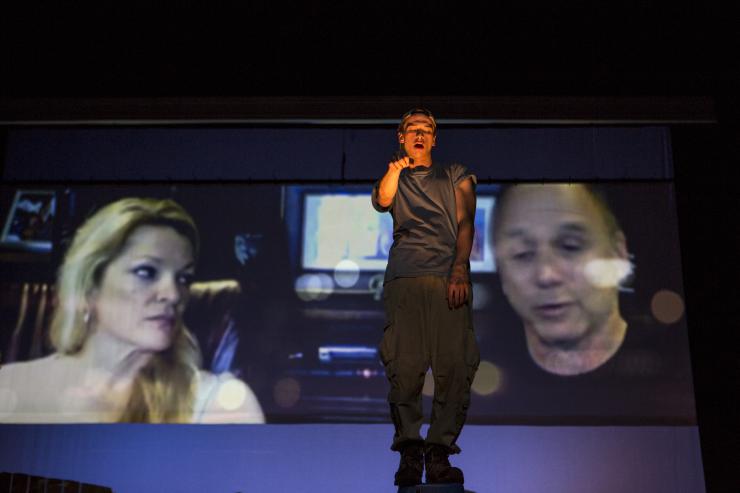
Morgan: One thing I found interesting is that there is a thematic question which the piece is trying to answer along with an aesthetic question: How is the story told with a mixture of theatrical components? You could just have a play, but in this case you have a mixture of multi-media with verbatim text and fictional scenes.
Seth: I think the type of in-depth process and research that we conducted is unusual in the American theatre. It’s also unusual to work with a creative producer who has a really holistic sense of theatre as an art form. Annie is a storyteller who is open to any way of telling the emotional truth of a story using all of the means we have at our disposal in the theatre, including movement, music, acting, text, design, and in this case multimedia video design. What really made this so special and an unusual process for me, was that we took the time to develop the piece holistically as a partnership and we didn’t tie our hands by committing ourselves to a certain type of genre or style. We found the style organically and I think in this case the form began to fit the content—not the other way around. It wasn’t that we were trying to force our content into some pre-imagined show.
At the beginning of our process, I set out to research this strange world of wilderness therapy, reading books and all the information I could find online. Then we went to the field and lived out in Utah for eight days among groups engaging in wilderness therapy and that experience became raw content. I think initially we imagined that this would be a verbatim, documentary-based piece with video design, but organically over the months and years that followed our trip to Utah it really took on its own life to evolve into the form that we finally ended up with, which mixes documentary content with fictional scenes as well as extended musical and movement interludes and video design.
Anne: I remember when we did our first workshop at Pace. We probably had three times the amount of verbatim text we now have in the show. There was a lot of text that I had written for the Mom character that we ended up cutting. Seth wrote a dramatic scene we call the “socks scene,” about a girl in the program who is frustrated because she can’t find her socks, and I was like, “That’s so good! You need to do more of that!”
Morgan: That’s a great scene—it gives a lot of information about the dynamic and the characters. What was the trigger?
Seth: The inspiration was hearing the dynamic of the kids in the program, how they deal with the frustration of losing control over their lives. One of the subsequent scenes we wrote had a kid trying to defecate into a box who experiences the embarrassment of having to call his name out while pooping into a box in the woods. The kids have to call their name every few seconds so the staff know they haven’t run away.
Anne: When we were out there, we kept hearing this sound of kids calling out their names. You are literally sitting in a circle with the boys in the woods in the middle of nowhere and you hear someone call his name in the distance while he’s going to the bathroom. This is like a common thing that happens all day long. We talked about that a lot, and how it should be a scene in the show. I always say that I would throw ideas at Seth and he would spin them into gold. I feel like that is part of the wonderful relationship that we have. It’s been a wonderful partnership of trust and not being precious and not holding onto things that don’t work. There are so many things that we both wrote that we got rid of because they didn’t work.

Morgan: I was really impressed by that, that both of you would say, “OK, we like this, but it doesn’t serve what’s going on so we need to get rid of it.” This is rarer than you would think.
Seth: We couldn’t stay away from the impulse to dramatize what goes on out there. The rhythm of life and the language used out there is unique. In Utah, I wrote down a glossary of terms that the clients and staff were using; I literally wrote down every term that I didn’t know, which grew to several pages long. I was absolutely entertained and captivated by that vocabulary. It was an alternate world with its own language and rules.
I find that being a writer for the theatre is often being a kind of anthropologist and linguist. There is the language of a people and how they communicate amongst themselves, not only their words but their way of speaking and their emotional language as well. The kids would often make up byzantine in-jokes and terms for things that required multiple layers of explanation. Not all of this made its way into the show but we were deeply inspired by the true flavor of life, the language, and the rhythm of life out there: foreign, alien, and yet fascinating.
Anne: If we hadn’t gone out to the wilderness, I don’t think the piece would have been successful, and it is so hard to fight for that. One of the things that was extremely important for me is that as a creative producer there are many artists that would like to put me into a box of not being really “creative.” I’m a producer so supposedly all I really know how to do is raise money and market a show, but the “creative” in creative producer is really important to me. Seth extended his trust in me that was very meaningful, and I to him.
Morgan, as you mentioned, we were not precious about the material. I’d write something and we’d look at it and say, “This sucks,” and he’d write something and I’d say, “It’s not the truth yet, it’s not the truth yet.” We played a significant valuable role in each other’s creative process and learned to respect what each other needed.
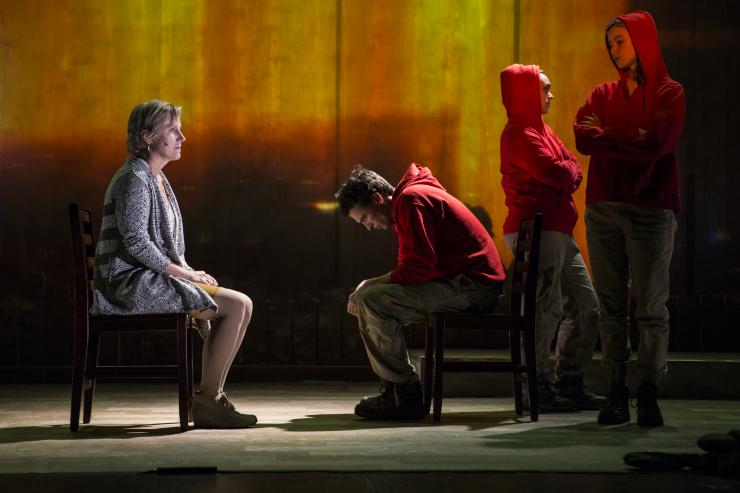
Seth: I’d like to talk a little about play development from an institutional perspective. Annie was just talking about the role of a producer, but I also think it’s important to point out that I was wearing multiple hats, being a co-writer and also the director. One of the ways we were able to make all of this work is that we integrated design and staging into our play development workshops. And, in the American theatre, as you know, most of the time play development is primarily about revising the text. We certainly did plenty of that in our workshops, but in addition, both in our partnerships with Pace University in New York where we had two different workshops, and our work at the University of Florida, Gainesville, we put the work up on its feet to begin exploring movement work, live music, and video design elements. It was priceless that we actually had opportunities to integrate design as we developed the text of the show. Florida was the most important of those because we actually had an extraordinary opportunity not only to mount a full workshop production of the play while it was still being written but to be able to actually integrate video design elements and music into the piece. In the traditional American theatre that isn’t commercial that is a rare opportunity and it was really critical for us.
Morgan: As a dramaturg, I talk to both writers and dramaturgs a lot about the tyranny of the written text. A theatrical text can start with movement and can go to a light cue or go to a sound cue or a piece of video and back to the text. Many people who saw this show said to me how much they loved the red hoodies and how there was a narrative in that and a narrative in the movement work created by Devon De Mayo and Patrick McCollum. It was a part of the psyche of the piece.
Anne: One of the problems with creating this kind of work is in its presentation while in development. How do you do a reading, for instance, that can represent what you are trying to say and how you are trying to say it? You want to open up your process to people while you are developing something but it is near impossible to do a reading of a multimedia piece like this and have the audience understand what it is and what you are trying to do. It feels to me like it is a requirement of the form to engage in workshops as opposed to readings. The workshops really allowed us to see what was and wasn’t working.
And Morgan, you came on board at a critical time in the process. You have this wonderful ability to ask questions, make comments, and prompt thinking that make artists feel as though you are totally on their side and come up with suggestions that are absolutely critical points of view necessary to the successful realization of the piece.
Morgan Jenness: I am not a parent, I don’t have a kid that’s in crisis, but I have an adolescent in crisis somewhere within me, and I am someone who is looking at a younger generation and is worried. I am someone who feels, ‘I need to go to the wilderness.’
Morgan: I always figure that you have to get on a horse that is running to learn how the horse can run faster and better. Part of what enabled me to do this is that I love this type of theatre. Aristotle said to Plato, “You’re wrong about art not being real.” He said, “The art needs to deal with the deeper truth underneath the facts.” And I feel that is what was going on. Here are the facts, and now we are going to find what the deeper truths are both in this specific situation but also what it means to me as an individual.
I am not a parent, I don’t have a kid that’s in crisis, but I have an adolescent in crisis somewhere within me, and I am someone who is looking at a younger generation and is worried. I am someone who feels, “I need to go to the wilderness.” The piece has these spaces, where it is poetic and where it becomes metaphor. This opens it up, almost like a walk in the woods. You can walk in the woods on a trail that is clearly marked, or you can walk in the woods where there is no help whatsoever, but probably the best walks in the woods are those walks where they tie blue ribbons around the trees. You might think, “Oh my God I’m lost” but then you find the blue ribbon. “I’m here and I’m not lost!”
Seth: That’s lovely, Morgan. You were invaluable, and what you just said speaks to your skill in looking at the collective unconscious dimensions, the dream logic of a work like this and helping us to discover the latent metaphors and poetry in the work. You are a dramaturg who is both literary and theatrical, visual and emotional and spiritual, and that holistic approach matched our hopes and intentions. And I love what you just said about the inner adolescent in all of us, the inner parent in all of us. Theatre is the most empathic art form. One of my pet peeves is when people say, “I can’t imagine what that would be like” and I bristle at that because I think that you can imagine what this is like. That is the work of something like Wilderness, to take extreme situations that many audience members have not undergone either as parents or children and to put you in a position to imagine it. That’s the work.
Morgan: Being able to imagine what you think you can’t imagine. That is the art of theatre.

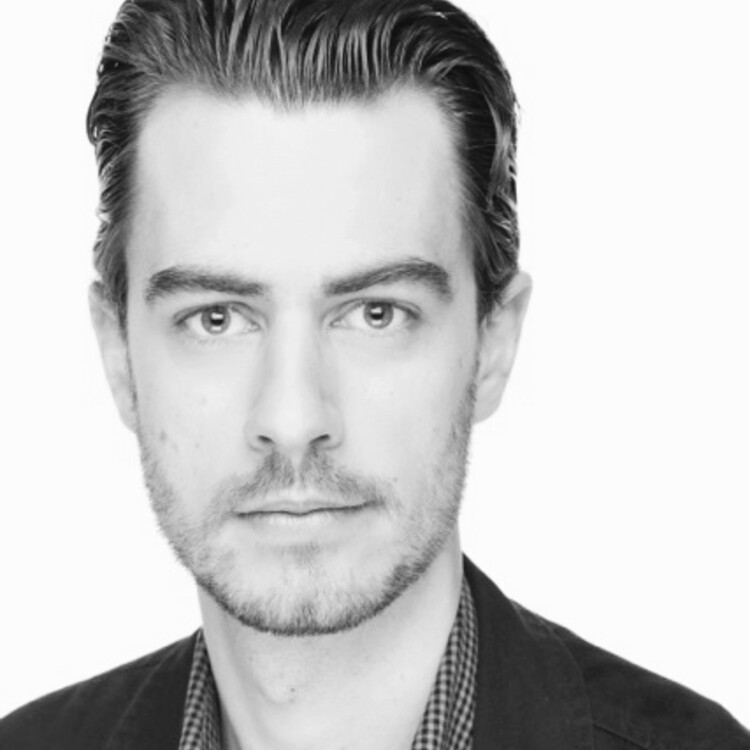
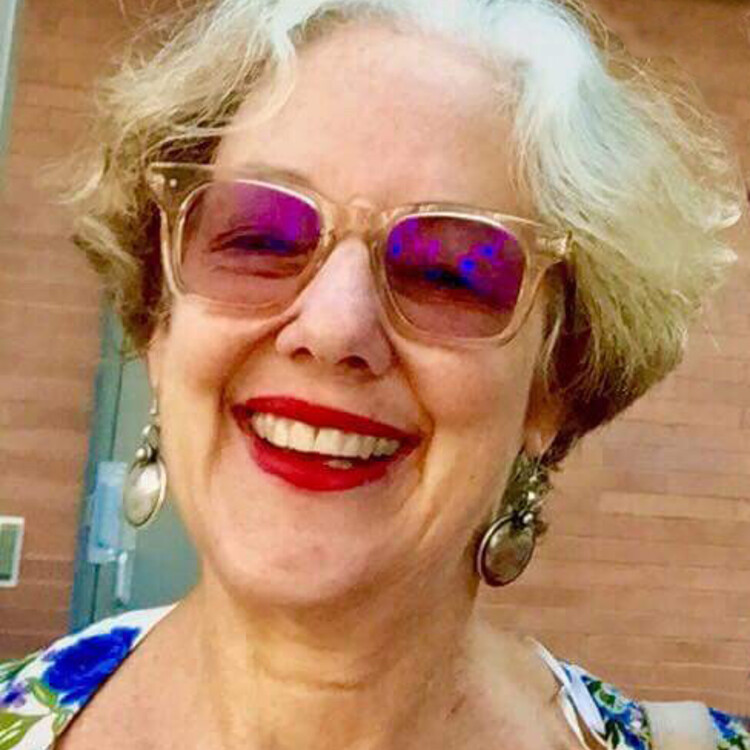
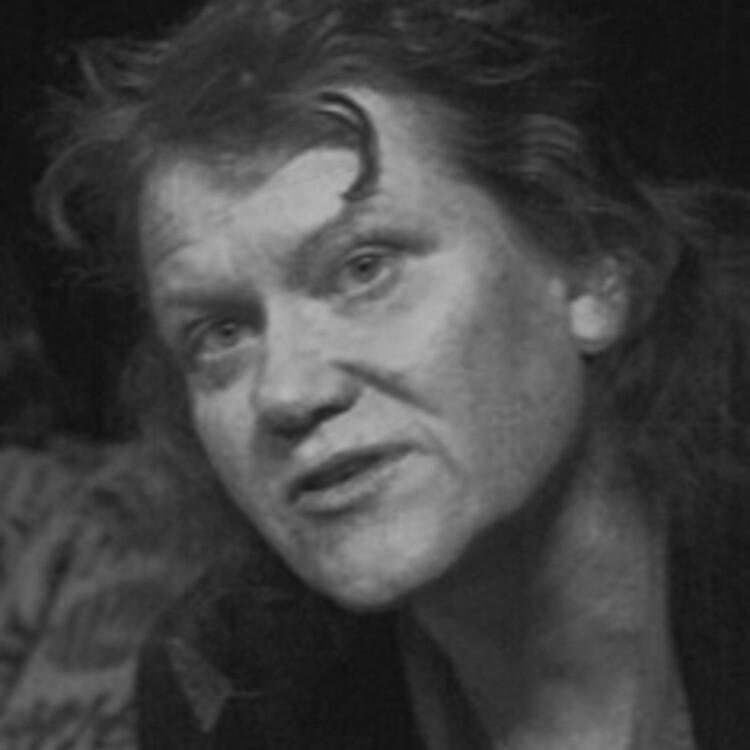
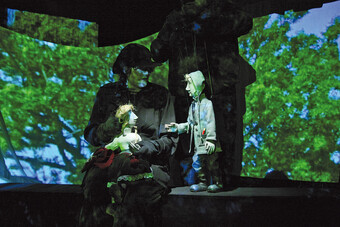




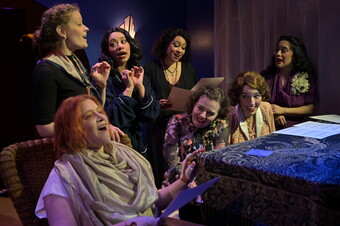


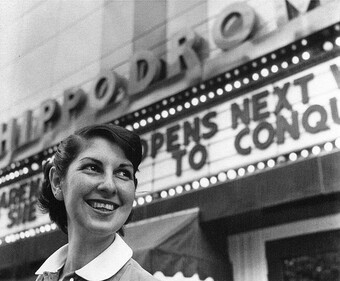

Comments
The article is just the start of the conversation—we want to know what you think about this subject, too! HowlRound is a space for knowledge-sharing, and we welcome spirited, thoughtful, and on-topic dialogue. Find our full comments policy here
three smart people taking about an interesting project- thanks, Howlround- this is something i appreciate having as a resource, and the kind of conversation i find energizing as a reader.